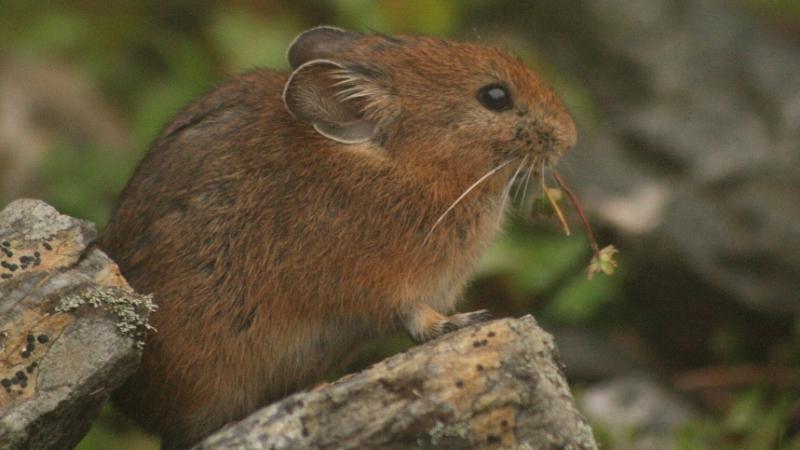
Did you know that Pikachu, the famous character from the Pokémon franchise, was loosely inspired by a tiny animal found in cold mountainous regions? Known as the pika, they are small, round mammals closely related to the rabbits. They are found mostly on rocky mountain slopes and are native to cold regions of Asia, North America and parts of Eastern Europe. These short-eared herbivores are a crucial link in the food chain of the alpine ecosystem as they are food for carnivores like the snow leopard, brown bear, Tibetan fox and raptors.
A recent study, published in the journal Ecology and Evolution, has found evidence that climate change is threatening these mountain-dwelling mammals! This population genetics study on the Royle’s pika (Ochotona roylei) was conducted by researchers at the Indian Institute of Science (IISc), Bengaluru, and was funded by the Department of Biotechnology, Pro-Natura Foundation and the Wellcome Trust/DBT India Alliance Fellowship. The researchers tried to understand the evolutionary consequences of climate change on the population structure and distribution of the pikas.
Being cold-adapted species, pikas are sensitive to changes in temperature. Recent studies have indicated that increased summer temperatures can lead to thermal stress, and the lack of winter snow, which acts as a thermal insulator, can expose pikas to extreme cold which could kill them. A thin cover of snow during spring can negatively impact their reproductive success. Since pikas feed on herbaceous plants, which are sensitive to changes in the rainfall pattern, conditions like drought could reduce their food availability. Besides, the changing climate and narrow ecological requirements, have restricted pika populations to higher elevations, leading to fragmentation of their habitat and distribution range.
The researchers of this study analysed Royle’s pika populations in the Garhwal region of the Western Himalayas. They collected DNA extracts from the faecal samples of Royle’s pika from five locations and analysed the genetic differences within and between their populations.
The researchers found that those pikas which were separated by more than a kilometre did not have much genetic similarities and those that were far away from each other had high genetic variation. On the other hand, those that were close together had comparatively low genetic variations.
“This phenomenon is known as isolation by distance. The population which is geographically closer and not isolated by any large river or wide valley could have experienced gene flow, or the transfer of genetic materials between each other, in the recent past. Hence, they seem to have a low genetic variation”, explains lead author Dr Sabuj Bhattacharyya from IISc.
The researchers also detected moderate levels of inbreeding among the pika. Inbreeding results in a loss of genetic variation, making them susceptible to various diseases and genetic disorders. “The limited dispersal ability and the natal philopatry (where offspring breed at or close to their place of birth) of pikas often lead to high inbreeding. Habitat fragmentation and the presence of geographic barriers can also restrict individuals from moving across habitats, resulting in inbreeding. In the event of high inbreeding, pikas might lose genetic diversity and become highly vulnerable to diseases”, adds Dr Bhattacharyya, who has been studying the Royle’s pika in the Western Himalayas for the past eleven years.
The study also showed evidence of dwindling numbers of Royle’s pikas in recent years—a phenomenon called population bottleneck. The researchers attribute it to the changing climate in the Himalayas. As glaciers recede and winters become warmer, climate-sensitive mammals like the pikas could face the worst.
“To avoid population extinction locally and globally, pikas need to have a minimum viable population size to ensure its long-term survival. Hence, the presence of population bottleneck might make the pikas vulnerable to extinction in the future. They are an under-studied species, and we need more data from long-term research to improve our understanding of how climate change affects them”, signs off Dr Bhattacharyya.





